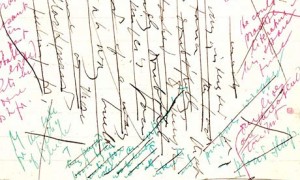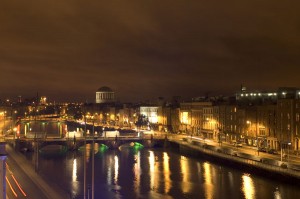 Now that the literary history of the twentieth century can be examined entire, it seems clear that Joyce’s Ulysses is, by any number of measures, the century’s most important and influential English- language novel. It is also one of the modernist canon’s most difficult texts―two facts that are not unrelated, since modernism actively promoted the idea that difficulty was a necessary component of literary excellence. In this seminar a group of college and university teachers and graduate students committed to a fuller understanding of the ways in which the novel continues to provoke and challenge us will pursue a systematic exploration of 1) the different modes of critical interpretation that have been developed and deployed to confront the novel’s challenges, and 2) the various uses that have been made of Ulysses within the larger cultural institutions of literary modernism, secondary and higher education, and various forms of high- and popular-culture production. We will explore Ulysses, then, both from “within” and “without”: as a carefully shaped literary text with continuing scholarly appeal, and also as a text which has enjoyed a complex and intriguing “public” career. Our goal will be to develop multiple and complementary hypotheses to address the question: What unique combination of “intrinsic” (textual) and “extrinsic” (contextual) forces can help us to account for the unparalleled position that Ulysses holds in twentieth-century literature?
Now that the literary history of the twentieth century can be examined entire, it seems clear that Joyce’s Ulysses is, by any number of measures, the century’s most important and influential English- language novel. It is also one of the modernist canon’s most difficult texts―two facts that are not unrelated, since modernism actively promoted the idea that difficulty was a necessary component of literary excellence. In this seminar a group of college and university teachers and graduate students committed to a fuller understanding of the ways in which the novel continues to provoke and challenge us will pursue a systematic exploration of 1) the different modes of critical interpretation that have been developed and deployed to confront the novel’s challenges, and 2) the various uses that have been made of Ulysses within the larger cultural institutions of literary modernism, secondary and higher education, and various forms of high- and popular-culture production. We will explore Ulysses, then, both from “within” and “without”: as a carefully shaped literary text with continuing scholarly appeal, and also as a text which has enjoyed a complex and intriguing “public” career. Our goal will be to develop multiple and complementary hypotheses to address the question: What unique combination of “intrinsic” (textual) and “extrinsic” (contextual) forces can help us to account for the unparalleled position that Ulysses holds in twentieth-century literature?
As teachers of modern literature, we’re forced to confront this paradox: as difficult as Ulysses is, there’s enormous cultural capital attached to it, and students as well as members of the reading public are eager to confront it, to accept the challenge it represents. Ulysses is a large enough and difficult enough novel that it’s not regularly taught in undergraduate survey courses of the period (though it is taught with some frequency in upper-division courses, and comprises an essential experience of graduate training in English); but all teachers of modern literature teach something of Joyce’s work, be it the frequently anthologized stories of Dubliners or the quintessential twentieth-century Künstlerroman (novel of artistic development), A Portrait of the Artist as a Young Man. This NEH Summer Seminar, by focusing intensively on Ulysses, its critical history, and current cutting-edge critical and textual theory, as well as considering the shadow it has cast on all subsequent artistic production, will give college and university teachers of modern literature resources to take back to their students, as well as to invest in their own scholarly research.
 Dante famously suggested that his Divine Comedy could, and should, be interpreted on four different levels; and while the levels are different, we would suggest that Joyce’s Ulysses, too, operates at four distinct levels of complexity. On one level―the simplest level, the level of plot―Ulysses is about one day (June 16, 1904) in the life of a Dublin Jew, Leopold Bloom, as he goes about his work of soliciting advertising for two Dublin newspapers while avoiding the fact that his wife (Molly) will consummate her relationship with her lover that afternoon at their home. It is also the story of Stephen Dedalus, shabby-genteel scholar-artist and protagonist of Joyce’s 1916 semi- autobiographical novel A Portrait of the Artist as a Young Man, who continues to wrestle with the direction of his artistic calling. On a second level, Ulysses is of course a twentieth-century re- imagining and rewriting of classical myth: Bloom is likened to Homer’s Odysseus, his workday trials and tribulations playfully paralleled to those of Homer’s epic hero; Molly is his (unfaithful) Penelope, and Stephen Dedalus, a stand-in for Telemachus. The otherwise chaotic wanderings of this single day (known among devotees as “Bloomsday”) is thus endued with a kind of epic grandeur―or ironically trivialized by the comparison, according to some. The third level is the level of style; Joyce liked to say that his eighteen-chapter novel explored the stylistic stakes of eighteen distinct literary styles, so that, for instance, the chapter that likens a young Dublin woman to Homer’s Nausicäa adopts the turgid style of the magazines and paperback novels with which her daydreams have been furnished. And finally, on a fourth level, because Ulysses is by consensus the greatest accomplishment of twentieth-century literature in English, it has been central in the development of twentieth- century literary criticism and theory, and the subject of the most rigorous critical examination of the century. Indeed, it is not too much to say that the history of twentieth-century literary criticism is incomprehensible without Ulysses, just as Ulysses is incomprehensible without the criticism it called forth. To study Ulysses, especially its reception over the past forty-five years, is to study the development of literary theory after the advent of deconstruction, a lesson that of course has wide application outside of Joyce studies.
Dante famously suggested that his Divine Comedy could, and should, be interpreted on four different levels; and while the levels are different, we would suggest that Joyce’s Ulysses, too, operates at four distinct levels of complexity. On one level―the simplest level, the level of plot―Ulysses is about one day (June 16, 1904) in the life of a Dublin Jew, Leopold Bloom, as he goes about his work of soliciting advertising for two Dublin newspapers while avoiding the fact that his wife (Molly) will consummate her relationship with her lover that afternoon at their home. It is also the story of Stephen Dedalus, shabby-genteel scholar-artist and protagonist of Joyce’s 1916 semi- autobiographical novel A Portrait of the Artist as a Young Man, who continues to wrestle with the direction of his artistic calling. On a second level, Ulysses is of course a twentieth-century re- imagining and rewriting of classical myth: Bloom is likened to Homer’s Odysseus, his workday trials and tribulations playfully paralleled to those of Homer’s epic hero; Molly is his (unfaithful) Penelope, and Stephen Dedalus, a stand-in for Telemachus. The otherwise chaotic wanderings of this single day (known among devotees as “Bloomsday”) is thus endued with a kind of epic grandeur―or ironically trivialized by the comparison, according to some. The third level is the level of style; Joyce liked to say that his eighteen-chapter novel explored the stylistic stakes of eighteen distinct literary styles, so that, for instance, the chapter that likens a young Dublin woman to Homer’s Nausicäa adopts the turgid style of the magazines and paperback novels with which her daydreams have been furnished. And finally, on a fourth level, because Ulysses is by consensus the greatest accomplishment of twentieth-century literature in English, it has been central in the development of twentieth- century literary criticism and theory, and the subject of the most rigorous critical examination of the century. Indeed, it is not too much to say that the history of twentieth-century literary criticism is incomprehensible without Ulysses, just as Ulysses is incomprehensible without the criticism it called forth. To study Ulysses, especially its reception over the past forty-five years, is to study the development of literary theory after the advent of deconstruction, a lesson that of course has wide application outside of Joyce studies.
The work for each week will be comprised of both “primary” and “secondary” materials and considerations. Because each Ulysses’ eighteen episodes is a unique stylistic world, we will do our best to pay each one a world’s worth of attention. The five-week span of the seminar requires us to double up episodes in a few early meetings, but this will allow us to spend a full session on each episode during the last three weeks, as the episodes get longer and more disorienting. As it happens, this pace lets us devote our final week to the three chapters Joyce dubbed the “Nostos,” or return home, on the model of the Odyssey. A literary Nostos before our own homegoing.
